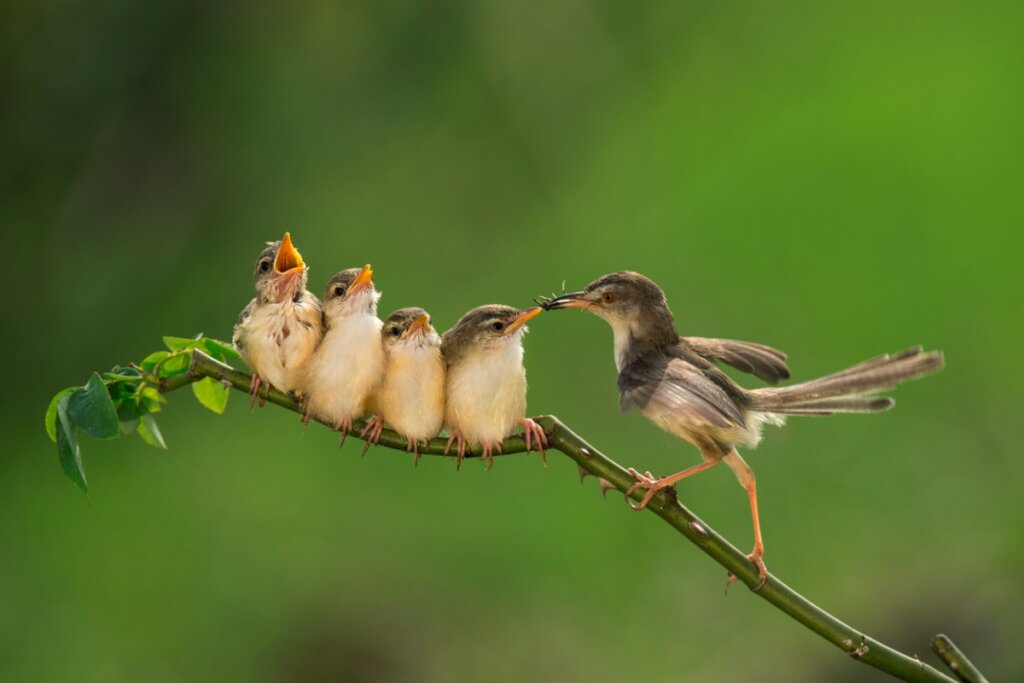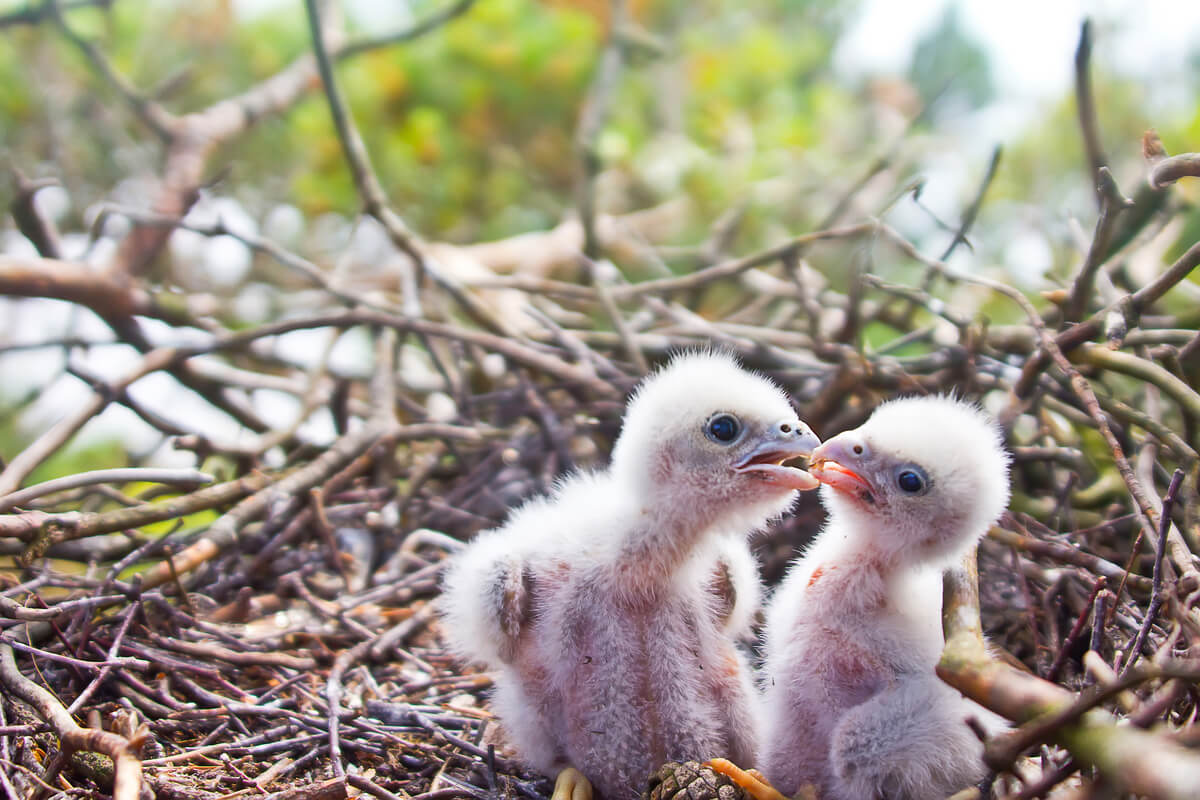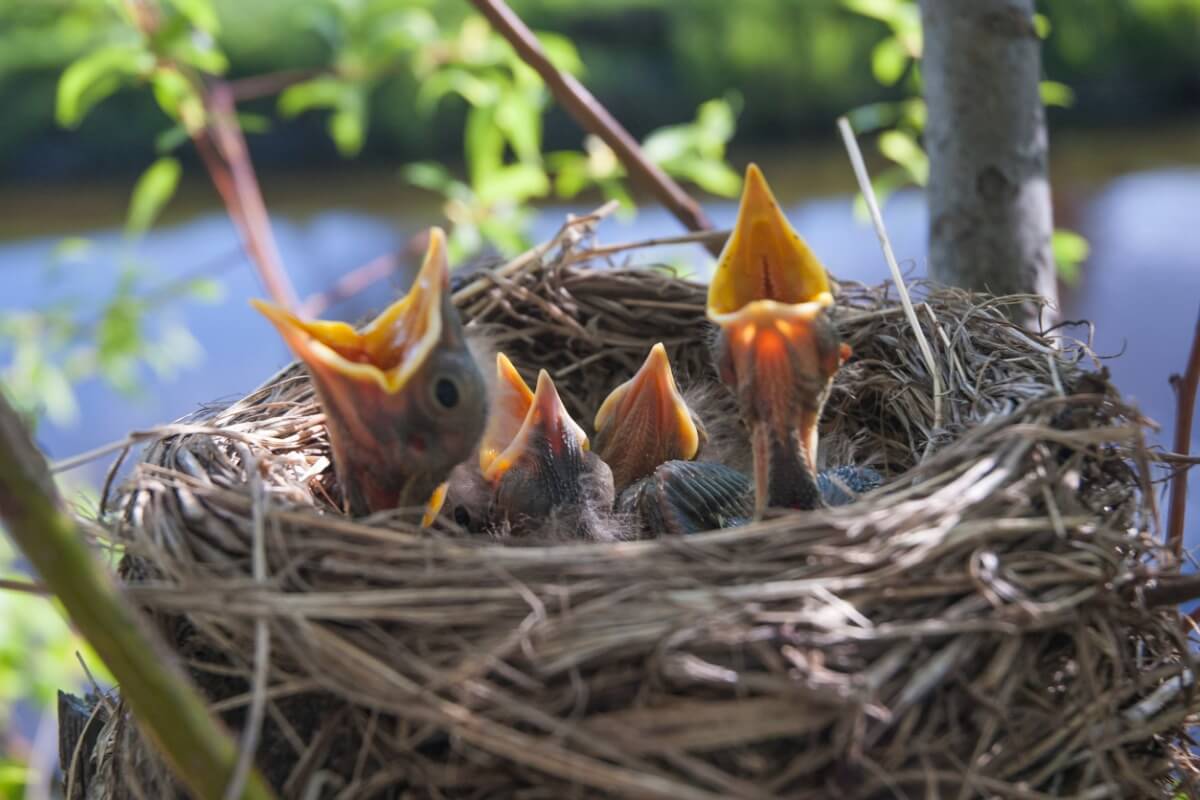Feeding Baby Birds: All You Need to Know
Feeding baby birds is a delicate and serious subject. Here you can learn the basics to ensure the survival of the chick.

Finding an unattended bird is a challenge. After making sure that the parents aren’t in the area, you could go to a wildlife recovery center, identify the species, and even agree to take care of it. In that case, the next question is obvious: What should I know about feeding baby birds?
The survival of the chick will depend entirely on what you do for it, and so you’ll need to do a lot of research on the matter. In this article, we’ll bring you some basic tips about this delicate subject. With this and the support of a specialized veterinarian, the little one is sure to succeed in your hands.
What do newborn birds eat?
First of all, you need to find out what species the bird is. Depending on this, you’ll be able to find out if the two parents feed it in the nest or only one of them, in addition to the specific diet of its species. The shape of the beak is a good clue to the feeding it needs. For example, insectivorous birds have a thinner, longer beak, and those that feed on seeds have a short and conical one.
If the bird is newborn, it’ll most likely feed on the “porridge” that its mother regurgitates, and the nearest equivalent is brood paste when it’s in your care. You can buy it in specialized stores or at the veterinary clinic, so don’t worry.
For species that feed on animal protein you can make a homemade version with cat food, egg and breadcrumbs.

Feeding baby birds
If you have ever seen images of a nest with chicks, you may have observed that the little ones open their beaks wide and chirp when the adult arrives with food. The parents introduce the food or porridge into the chick’s mouth, directly at the beginning of the digestive tract so that it can swallow it without choking.
To imitate this behavior from home, insert a syringe with the porridge and without a needle into the chick’s mouth up to the end of the palate and feed it in small doses. If you’re lucky, the little one will ask for food, but, if not, you’ll have to open its beak by taking it between your thumb and forefinger carefully.
More details on feeding baby birds
If you find a fledgling bird that can already eat on its own, the process is similar. Find out the species and diet and prepare a suitable area for it until you go to the rescue center. However, in this case, you won’t have to probe or feed it by hand; you’ll only have to respect its frequency and diet.
However, as it’s used to being cared for by its parents, the chick may refuse to eat when it’s with you. It also may be sick (or injured, if it’s fallen from the nest). If it hasn’t got any appetite, then take it to a veterinary clinic immediately.
Baby bird food
You may have taken in a bird whose diet you don’t have direct access to. In this situation, you’ll have to look for a valid substitute that guarantees the nutrients your body needs. There are two alternatives that constitute a good diet for baby birds.
- Commercial feed: Some brands have specific feed for the different stages of development of each bird. If you find suitable seed mixtures for granivorous birds, these can also be useful.
- Homemade feeding: This option is more affordable for some people, but you have to make sure that it strictly meets the needs of the little bird. In supermarkets and pet supply stores you can find everything from specific seeds to insects.
Choosing a natural diet without having any experience can be difficult. If you decide to search for it on the internet, do so only on the pages of official organizations (such as rescue or research centers). In any case, going to a veterinarian guarantees you personalized attention and advice for feeding baby birds.
Forbidden food for baby birds
Knowing about what birds shouldn’t eat is as important as knowing what they should eat. If you don’t give it what it needs or feed it the wrong products, then the bird will be in danger from poisoning or development problems. Some general prohibitions are the following:
- Milk: Birds aren’t mammals, so they don’t drink dairy. The typical bread dipped in milk or adding it to homemade mixtures will only cause damage to the bird’s organs.
- Water: You can use water to get the consistency needed in a porridge, but you should never give it directly to the chick. Being such small animals, you can alter body temperature or cause pneumonia if it enters the airways.
- Bread: Like water, it can be used to thicken a homemade mixture, but it shouldn’t be given in pieces, otherwise the bird may choke. Also, it has no relevant nutritional value in a chick’s diet.
How much should a bird eat?
Birds, especially in their growing stage, have a very fast metabolism that forces them to eat quite regularly. Find how often the parents feed the chick of the species you are caring for and do it the same as them. The amount of food should be the same as well.
If the chick refuses to eat, you can reduce the amount of food and distribute it in more feedings so that it gradually associates you with the food. Hopefully, it will eventually open its beak and chirp for food, and then you can go back to the normal amount and frequency.
If you still can’t get it to eat, force feeding with a tube is the only option, and this is best done by a vet or someone with experience.
If the baby is old enough to eat on its own, you may have the option of leaving the food freely available for the bird to eat when it wants. If it can take adult food, then the bird will also be able to drink by itself: provide a drinker with fresh, clean water.
What can you feed a street bird?
Many bird lovers find come into contact with young birds because they feed the species that live in their area. When birds come to the balcony or the garden to eat, it’s a sight to behold.
If you want to feed the birds in your area, first identify which species they are and look for specialized feeders for them. There are some that only allow certain birds to pass according to their size, so you can prevent a magpie from eating a sparrow’s food, for example.

However, keep in mind that birds are wild animals and it isn’t good for them to depend on you for food. You could attract predators as well or throw their diet out of balance. It’s better to put the feeders in the vicinity of your home rather than at the window or on the balcony. In this way, you won’t influence its natural behavior too much, but the views will still be endearing.
